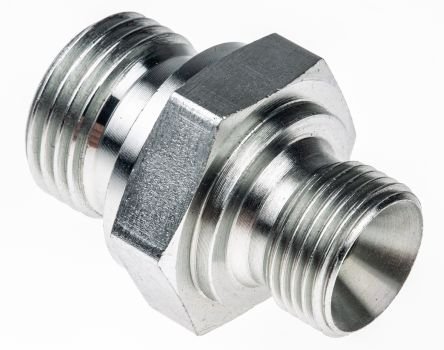Introduction: Hydraulic systems are integral to numerous industrial and mechanical applications, offering precision and power in fluid control. At the heart of these systems are hydraulic fittings, small but critical components that ensure the integrity and efficiency of the entire setup. Selecting the right hydraulic fittings is not just a matter of size or material; it involves a deep understanding of system requirements, environmental conditions, and the specific application’s demands. In this blog, we delve into the crucial aspects of hydraulic fitting selection, guiding you to make informed choices for your hydraulic systems.
Understanding Hydraulic Fittings
Hydraulic fittings are connectors that link various components of a hydraulic system such as hoses, pipes, and tubes. These fittings ensure a tight seal and prevent leaks, maintaining the system’s pressure and fluid flow efficiency. They come in different shapes, sizes, and materials, each designed for specific pressure ranges, temperatures, and fluid types.
Types of Hydraulic Fittings
The first step in choosing the right hydraulic fitting is understanding the different types available. Common types include:
- Threaded Fittings: These are used for creating stronger seals and are suitable for high-pressure applications. They come in various thread forms like NPT, BSPP, and JIC.
- Flange Fittings: Ideal for high-pressure applications, flange fittings offer easy assembly and disassembly.
- O-Ring Face Seal Fittings: These provide a reliable, leak-free seal and are used in high-pressure systems.
Material Matters
The material of the hydraulic fitting is crucial for its durability and compatibility with the hydraulic fluid. Common materials include:
- Steel: Known for its strength and durability, suitable for most applications.
- Stainless Steel: Best for corrosive environments or when using aggressive fluids.
- Brass: Ideal for lower pressure systems and offers good corrosion resistance.
Size and Shape Considerations
The size and shape of the fitting must match the dimensions of the hoses or tubes in your system. Incorrect sizing can lead to leaks or system failure. It’s important to refer to the manufacturer’s specifications to ensure compatibility.
Pressure Ratings
Each fitting is rated for a specific pressure range. Always choose a fitting that can handle the maximum operating pressure of your system to ensure safety and longevity.
Temperature Tolerance
Hydraulic fittings must withstand the operating temperatures of the system. High-temperature applications may require special materials like stainless steel to maintain integrity.
Environmental Factors
Consider the environmental conditions in which the system will operate. Factors like humidity, temperature fluctuations, and exposure to chemicals or UV light can impact the choice of fittings.
Compatibility with Hydraulic Fluids
Ensure the materials of the fittings are compatible with the type of hydraulic fluid used in your system. Incompatibility can lead to corrosion and system failure.
Choosing a Reliable Supplier
When it comes to sourcing hydraulic fittings, partnering with a reliable and knowledgeable supplier is key. A reputable supplier like Enrgtech not only offers a wide range of high-quality hydraulic fittings but also provides expert guidance to help you select the right components for your specific needs. Enrgtech’s comprehensive catalog, backed by industry expertise, ensures you get the best-fit components for your hydraulic systems.
Conclusion
Selecting the right hydraulic fittings is crucial for the efficiency, safety, and longevity of your hydraulic systems. By understanding the types of fittings, considering material, size, pressure rating, temperature tolerance, environmental factors, and fluid compatibility, you can ensure that your system operates at its best. Remember, partnering with a trusted supplier like Enrgtech can make the selection process smoother and more efficient. Invest time in choosing the right components, and your hydraulic system will reward you with reliable and consistent performance.

